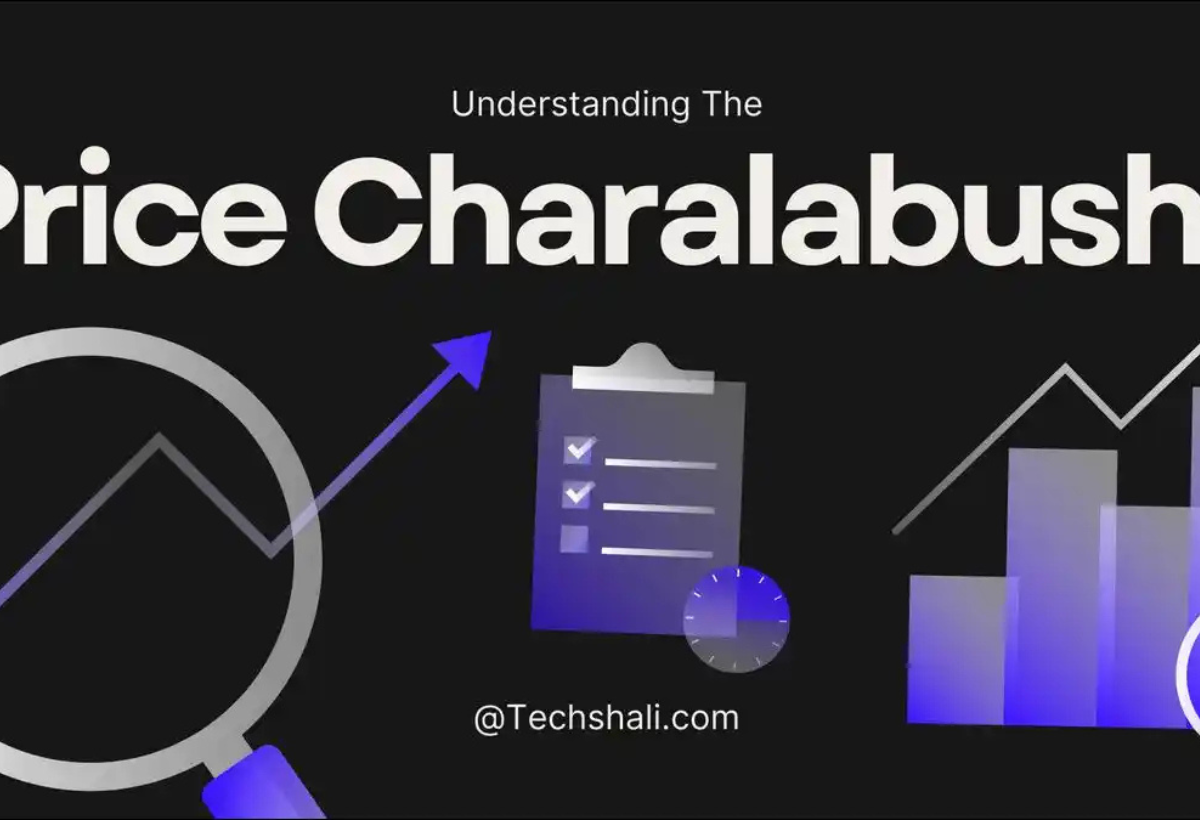
What is Price Charalabush
Price Charalabush is a term that encapsulates the essence of price fluctuations across goods and services in various markets. Though not widely used in mainstream economics, this concept perfectly describes the dynamic nature of pricing influenced by market conditions, consumer behavior, and external economic forces.
Whether you’re a savvy shopper or a strategic business leader, understanding Price Charalabush equips you with the power to make informed purchasing decisions and adapt your pricing strategy in a fluctuating economic environment. At its core, it’s about recognizing the signals in a constantly evolving marketplace and turning volatility into opportunity.
Understanding Price Charalabush
Price Charalabush doesn’t just happen—it evolves due to a cocktail of supply and demand imbalances, seasonal trends, and market-specific pricing strategies. It may also stem from a merchant’s approach to geographic pricing, customer segmentation, or real-time pricing adjustments.
This term represents a crucial intersection between economic theory and consumer reality. From the aisles of your local supermarket to the unpredictable cryptocurrency market, Price Charalabush influences your daily financial choices more than you might think.
Factors Affecting Price Charalabush
Understanding what drives these price shifts is key to navigating them. The most influential elements include the fundamental laws of supply and demand, shifts in seasons, the degree of market competition, and overarching macroeconomic trends such as inflation or currency fluctuations.
When examined closely, Price Charalabush reveals patterns that consumers and businesses alike can leverage. These patterns empower consumers to shop smarter and guide companies to adopt flexible and customer-centric pricing strategies.
Supply and Demand Dynamics
Supply and demand form the bedrock of price dynamics. A surge in demand or a dip in supply can cause prices to spike, as we often see with airline tickets during peak travel seasons or essential goods during emergencies.
On the flip side, excess supply can trigger price drops—think off-peak ride-hailing service costs. Price Charalabush thrives in this interplay, teaching us that market timing and awareness can significantly impact cost-effective shopping.
Seasonality
Seasonal pricing affects everything from holiday gifts to fresh produce. When demand peaks around events like Black Friday or dwindles after End-of-season Sales, prices respond accordingly.
Smart consumers and retailers plan around these trends. Strategic timing of purchases—known as off-peak buying—can save consumers money, while businesses can boost profits by aligning promotions with seasonal demand cycles.
Market Competition
In a competitive pricing environment, companies frequently engage in price wars, adjusting their rates to win customer loyalty. The result? Rapid and sometimes unpredictable price movements.
However, in markets defined by monopoly or oligopoly, the lack of competition leads to price rigidity. Price Charalabush highlights these distinctions, urging stakeholders to assess their competitive landscape regularly.
External Economic Influences
Macroeconomic factors like inflation, currency exchange rates, and global economic uncertainty can significantly impact pricing strategies. For instance, rising inflation leads to increased consumer prices, affecting affordability and purchasing habits.
Businesses use these insights to tailor pricing strategies, while consumers should monitor these economic factors affecting prices to make wiser consumption decisions.
How Consumers Respond to Price Charalabush
Consumers have more control than they might think. By recognizing pricing patterns, using digital tools, and participating in reward programs, they can navigate Price Charalabush with confidence and ease.
Price awareness doesn’t just help avoid overpaying—it transforms shopping into a strategic, data-driven endeavor. Mastering the art of timing, research, and reward utilization leads to smarter, more satisfying purchases.
Choose the Right Time to Buy
Timing is everything. Avoiding peak seasons and shopping during off-times or end-of-season sales can yield major savings. Planning ahead—especially for big purchases—can help you beat the wave of price hikes caused by seasonal demand.
Take Black Friday or year-end clearance sales: These are golden windows to capitalize on dynamic pricing. By understanding these cycles, consumers can enjoy better value with every dollar spent.
Research and Compare Shopping Options
Thanks to the internet, price comparison is easier than ever. From Google Shopping to specialized price tracker apps, consumers can access historical price trends and spot the best time to buy.
This practice not only supports cost-effective shopping but also protects against deceptive pricing tactics. With the right tools, everyone becomes a savvy shopper in the face of Price Charalabush.
Use Discounts and Member Rewards
Loyalty and membership discounts are powerful tools for offsetting price fluctuations. Retailers often offer rewards programs that include exclusive offers, cashback, and point systems.
By joining these programs, consumers can mitigate volatility while enjoying tailored benefits. They act as a buffer against unpredictable pricing and reward consistency.
The Role of Consumer Behavior
Consumer behavior drives pricing more than we realize. When consumers delay purchases or demand transparency, businesses respond with revised pricing strategies, enhanced offers, or even improved services.
The choices we make—from delaying purchases to switching providers—influence broader market behavior. In a world ruled by Price Charalabush, informed consumers have more power than ever.
Implications for Businesses
Price Charalabush isn’t just a consumer concern—it’s a business imperative. Companies must stay agile, responding to fluctuations with innovative pricing models and trust-building strategies.
To stay ahead, businesses must harness big data pricing analytics, analyze trends, and engage in real-time adjustments. The result? Better customer satisfaction and long-term profitability.
Dynamic Pricing
Industries like airlines and ride-hailing services thrive on real-time pricing. By using algorithms to adjust prices based on demand, they maximize revenue while maintaining service efficiency.
Other sectors are adopting this approach too. Dynamic pricing, when used ethically, becomes a powerful tool to combat Price Charalabush and optimize consumer satisfaction.
Transparent Pricing Policies
Honesty wins. Companies that adopt transparent pricing gain trust and loyalty. When customers understand the reasons behind a price increase or discount, they’re more likely to stay loyal—even during turbulent times.
Clearly communicating pricing logic also positions a brand as trustworthy and customer-centric, two values that matter immensely in a fluctuating economy.
Data-Driven Decision Making
Data analytics plays a pivotal role in developing accurate and adaptable pricing strategies. By tracking sales, consumer sentiment, and competitor behavior, businesses can stay one step ahead.
These insights are invaluable in crafting responsive strategies that anticipate Price Charalabush before it hits. The result is a proactive, rather than reactive, business model.
Price Charalabush in the Cryptocurrency Market
Nowhere is Price Charalabush more pronounced than in the cryptocurrency market. With assets like Bitcoin and Ethereum, prices can swing wildly in short periods due to market sentiment, macroeconomic factors, and global news.
This volatility makes crypto trading exciting but risky. Whether you’re a beginner or a pro, recognizing patterns and timing plays a crucial role in success.
Price Fluctuations of Cryptocurrencies
The decentralized and speculative nature of crypto leads to extreme price volatility. Social media posts, government regulations, or sudden investments by institutions can cause a price to soar or crash within hours.
Understanding these triggers is essential. For example, when a country legalizes Bitcoin, the price often surges. Similarly, panic can cause massive sell-offs. Awareness is your best defense.
How to Deal with Price Fluctuations in Crypto
To thrive amid crypto volatility, traders use strategies like technical analysis, stop-loss strategies, and portfolio diversification. These approaches minimize risk and maximize returns.
Investors should also track macro trends and stay updated on relevant news. Following expert analysis from trusted platforms like Gate.io adds credibility and accuracy to your decisions. As author Max emphasizes, success in crypto requires agility, foresight, and the right tools.
Summary / Conclusion
Price Charalabush is more than a trend—it’s a financial reality that influences everyday decisions. Whether it’s navigating seasonal pricing at your local store or analyzing the cryptocurrency volatility of Ethereum, being informed is your greatest asset.
By understanding the mechanics behind price shifts—supply and demand, market competition, and external economic influences—you can take control of your finances, make confident purchasing decisions, and run a more resilient business. Trust the tools, respect the trends, and turn volatility into your competitive advantage.
Frequently Asked Questions (FAQs)
What does Price Charalabush mean?
Price Charalabush refers to unpredictable or frequent price changes due to various economic and market-based factors such as demand, seasonality, and competition.
How can I avoid paying too much during Price Charalabush?
Shop during sales, use price comparison tools, and leverage loyalty programs to save money despite market fluctuations.
Why do cryptocurrencies experience extreme Price Charalabush?
Cryptocurrencies like Bitcoin and Ethereum are highly speculative and affected by global events, regulations, and investor sentiment, making their prices extremely volatile.
How do businesses benefit from understanding Price Charalabush?
By adopting dynamic pricing, transparent communication, and data analytics, businesses can stay competitive, build trust, and improve profitability.
Is Price Charalabush a bad thing?
Not necessarily. When understood and anticipated correctly, it offers opportunities for smart buying and strategic selling for both consumers and businesses.
Also Read:- SkylightVoice.com




